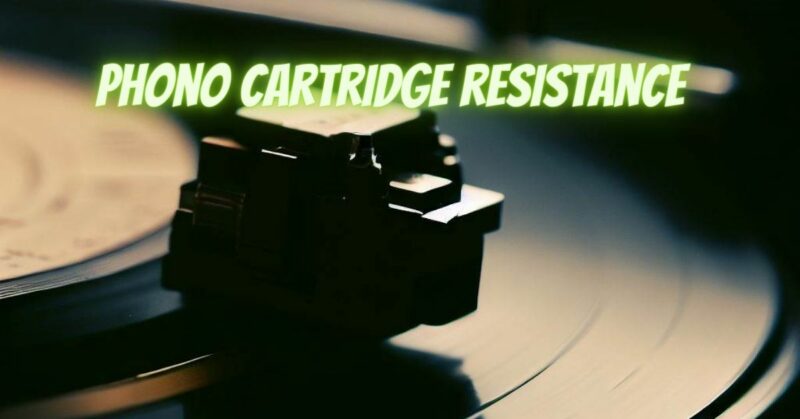In the realm of vinyl playback, phono cartridges serve as the critical interface between the stylus and the electrical signal chain, translating the intricate grooves of vinyl records into electrical impulses that can be amplified and reproduced as sound. Among the technical specifications that define a phono cartridge’s performance is its electrical resistance, a parameter that influences its compatibility with phono preamplifiers and the overall sound quality of a turntable system. In this article, we’ll delve into the concept of phono cartridge resistance, its significance in turntable performance, and how it impacts the playback of vinyl records.
What is Phono Cartridge Resistance?
Definition:
- Phono cartridge resistance refers to the electrical impedance presented by the cartridge to the phono preamplifier or phono stage in the turntable system.
- It is typically measured in ohms (Ω) and represents the opposition to the flow of electrical current through the cartridge’s coil or magnet assembly.
Types of Cartridge Resistance:
- There are two main types of cartridge resistance: moving magnet (MM) cartridges and moving coil (MC) cartridges.
- Moving magnet cartridges typically have higher resistance values ranging from 47 kΩ (kilohms) to 100 kΩ, while moving coil cartridges have lower resistance values ranging from 20 Ω to 1 kΩ.
The Role of Cartridge Resistance in Turntable Performance
Compatibility with Phono Preamplifiers:
- Phono cartridge resistance plays a crucial role in determining its compatibility with the phono preamplifier or phono stage in the turntable system.
- Phono preamplifiers are designed to provide the appropriate gain and equalization (RIAA curve) for specific cartridge types and resistance values.
Signal-to-Noise Ratio (SNR):
- The resistance of a phono cartridge can affect the signal-to-noise ratio (SNR) of the turntable system, which measures the ratio of the desired signal (music) to unwanted noise (hiss, hum, etc.).
- Higher cartridge resistance values, such as those found in moving magnet cartridges, typically result in higher output voltages and improved SNR compared to moving coil cartridges with lower resistance values.
Tonal Characteristics:
- Phono cartridge resistance can influence the tonal characteristics and sound signature of a turntable system.
- Moving magnet cartridges are known for their warmth, smoothness, and versatility, while moving coil cartridges are prized for their detail, transparency, and dynamics.
Choosing the Right Cartridge Resistance
Matching with Phono Preamplifiers:
- When selecting a phono cartridge, it’s essential to ensure compatibility with the phono preamplifier or phono stage in your turntable system.
- Consult the manufacturer’s specifications or consult with a knowledgeable audio specialist to determine the appropriate cartridge resistance for your setup.
Listening Preferences:
- Consider your listening preferences and priorities when choosing between moving magnet and moving coil cartridges.
- If you value versatility, ease of use, and compatibility with a wide range of phono preamplifiers, a moving magnet cartridge may be the preferred option. If you prioritize detail, transparency, and dynamics, a moving coil cartridge may be more suitable.
System Synergy:
- Experiment with different cartridge resistance values to find the combination that best complements your turntable, tonearm, phono preamplifier, and overall system setup.
- Fine-tuning cartridge resistance can help optimize system synergy and maximize the sonic performance of your turntable system.
Maximizing Turntable Performance with the Right Cartridge Resistance
In conclusion, phono cartridge resistance is a critical parameter that influences the compatibility, sound quality, and overall performance of a turntable system. Whether you opt for a moving magnet or moving coil cartridge, choosing the right cartridge resistance is essential for achieving optimal sound reproduction and maximizing the enjoyment of your vinyl collection. By understanding the role of cartridge resistance and its impact on turntable performance, you can make informed decisions when selecting cartridges and fine-tuning your system setup, ensuring a rewarding and immersive listening experience for years to come.

